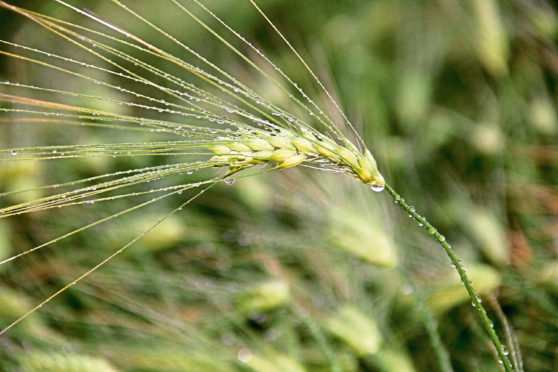Arable farmers should take steps to de-stress barley for better Ramularia resilience.
Alistair Gordon – regional technical manager in Scotland for agronomy firm ProCam – said although physiological stress that produces superficial brown spots on upper leaf surfaces of barely can cause some yield loss, the bigger issue is the fact it can trigger Ramularia flare-ups in infected plants.
Knowing how to reduce stress in crops would become more important when chlorothalonil is no longer available in future.
“Ramularia appears with a vengeance in crops under stress,” said Mr Gordon.
“You can’t do anything about weather-related stress factors, such as bright, hot days and cold nights that exacerbate the problem. But you can ease stress from other sources.
“As well as factors such as correcting soil pH to reduce stress, and avoiding large tank mixtures with excessive amounts of adjuvants, make sure barley isn’t held back through limited availability of manganese, copper or zinc.”
He said improved Ramularia resistance was visible last season in spring barley crops where nutrition, either from farmyard manure or foliar sprays, was used to create healthier canopies.
ProCam has been evaluating micronutrient and biostimulant treatments in spring barley and Mr Gordon said the firm had found “significant improvements” in both root and shoot growth.
“To help the crop I would look to apply one of these treatments at stem extension,” said Mr Gordon.
“At this timing, there should be enough leaf on the plant for effective spray absorption but without requiring an extra spray pass, because the treatment can be co-applied with a herbicide.”
He reminded growers that a winter barley crop with Ramularia was a possible source of infection for neighbouring spring barley, and advised against keeping home save seed from any crops that develop a Ramularia problem.
